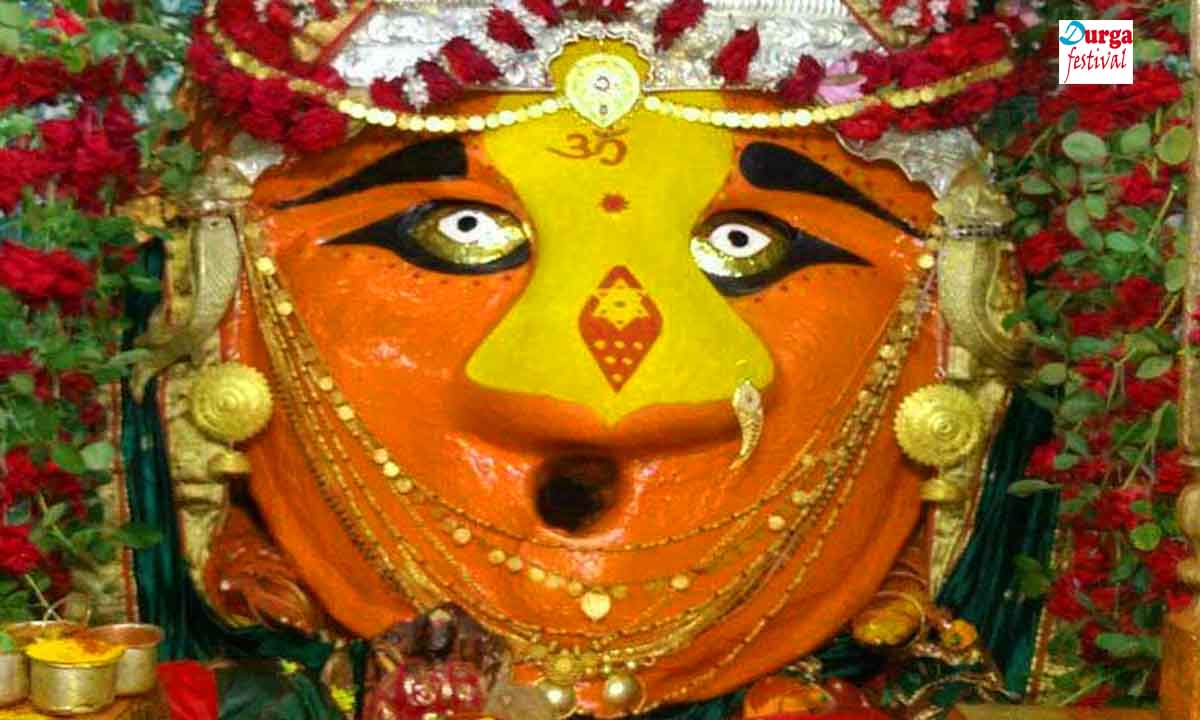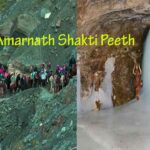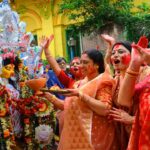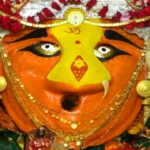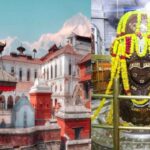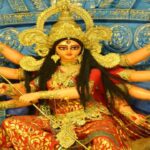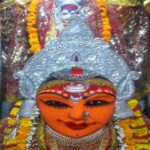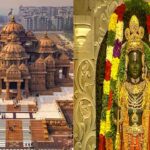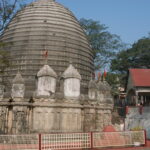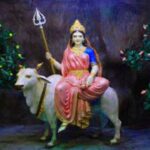Sade 3 Shakti Peeths in Maharashtra famous pilgrimage among devotees of Shakti in India. Four Shakti Peeths temples among three of them are complete Shakti Peeths and Saptashringi Temple at Vani, Nashik is known as half Shakti Peeth.
Sade 3 Shakti Peeths Of Maharashtra
Shakti Peeths are known as the place where temples made on the existence of Adi Goddess or Feminine energy. The story of Goddess Durga and her incarnation Mata Sati describe the fact of Shakti Peeths. According to the legend Shakti Peeths comes to an existence where the body parts of Mata Sati fells.
When angry Shiva did ‘tandav’ with roaming around the universe with her dead body, to escape the universe from destruction Lord Vishnu cut her body in to pieces with his Sudarshan Chakra to calm Lord Shiva. Those pieces fell to the earth which transformed as Shakti Peeths, or Temples of Goddess Shakti.
Sade 3 Shakti Peeths are 4 temples of Goddess Durga and her incarnations which are Saptashrungi Temple at Vani, Nashik, Mahalaxmi Temple at Kolhapur, Tulja Bhavani Temple at Tulja, Solhapur, and Renuka Mata Temple at Mahur, Nanded in Maharashtra.
1. Saptashrungi Temple at Vani is Majestic Among Sade 3 Shakti Peeths
Saptashrungi Temple is famous Hindu pilgrimage in Nashik, among Sade3 Shakti Peeths in Maharashtra. Located near Nanduri village, which is 65km from Nashik. The temple placed on the hilltop at the altitude of 1230m and devotees has to ascend 470 stairs to visit the temple.
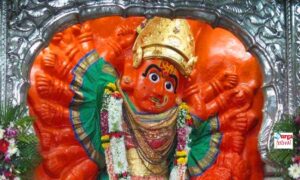
The idol of Mata Saptashrungi is dedicated to ‘Mahishmardini’, who killed the demon Mahishasura. It is also an incarnation of Devi Parvati, and one of the 51 Shakti Peeths of Goddess Durga. The right arm of ‘Sati’ believed to be fallen here and the deity is ‘Swambhu’ or self originated.
The temple is surrounded with seven Hills or ‘Shrunga’, cause Mata is called here ‘SaptaShrungi’, that means ‘adobe of seven peaks’. The image of Mata Saptashrungi is 10ft tall with 18 hands, holding weapons, which shows the ultimate symbol of power among Sade 3 Shakti Peeths.
The most famous festival here is ‘Chaitrosav’ celebrate every year in the Saptashrungi Temple and uncounted devotees visit that time. The temple is famous for childless women who worship for blessings of child in front of Saptashrungi Mata. Dussehra and Navratri also celebrated here with full dedication.
2. Mahalaxmi Temple At Kolhapur Is Mindful Among Sade 3 Shakti Peeths
Mahalaxmi Temple in Kolhapur is significant Hindu pilgrimage among Sade 3 Shakti Peeths In Maharashtra. Also known as Dakshin Kashi, Shri Mahalakshmi Temple is one of the six abodes of ‘Shakti’ where human attain ‘mokhsh’ or ultimate freedom from rebirth. The Goddess Mahalaxmi also called ‘Ambabai’ who killed the demon Kolhasur.
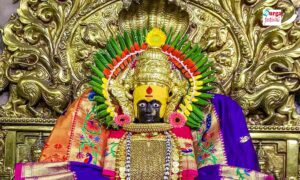
According to his last wish before death the place was named after his name, Kolhapur, it is believed. The Temple was built by Karandev of Chalukya Dynasty on 7th Century and completed by King Gandaraditya of Shilahara Dynasty on 11th Century CE. The temple is also an architectural masterpiece of Hemandpanthi style.
The image of the idol of Mahalaxmi with four armed and crowned which is made of sandstone. The idol is about 3 feet in height which is elegantly adorned with gorgeous Sari, Gold and diamond ornaments with colorful flowers. The idol of Ambabai holds a citrus fruit is called ‘maha lunga’ in the upper right hand, a large mace in the upper left hand, a shield in the lower right hand, and a bowl in the lower left hand.
A lion made of stone, stands behind the statue. According to Hindus sacred idols should have faced to north or east, but Mahalaxmi faced to the west which is also known as ‘Paschim Mukhi’. Beside the main shrine, there is also the temple of Mahasaraswati and the Mahakali with Shri Yantra is carved on the left corner.
Around the main shrine several other small temples are also found in the courtyard dedicated to Navagrahas, Surya, Mahishasuramardini, Krishna, Dashavartar, Ram Mandir, Mahavishnu, Hanuman, Laxmi-Narayan, Khandoba, Kalbhairav, Sidhivinyak, Lord Datta, Tulja Bhavani and more.
‘Kirnotsav’ is celebrated when the rays of the sun fall directly on the deity at the time of sunset, continue three days in the month of January on the occasion of ‘Rath Saptami’ and It is believed that the Sun god pays his homage to Mahalakshmi Ambabai.
The another famous festival which is celebrated for ten days during month of October, is ‘Navratra’ festival. When all ten days, Goddess adorned with valuable ornaments in various attires with flowers and fragrance and also taken out with gorgeous procession in Mahalaxmi Temple, among Sade 3 Shakti Peeths of divine Goddess.
3. Tulja Bhavani Temple is Historic Among Sade 3 Shakti Peeths
Tulja Bhavani Temple in Solapur dedicated to Mata Bhavani among Sade 3 Shakti Peeths in Maharashtra. It is one of the most significant ancient Shakti Peeths and Hindu pilgrimage in Maharashtra. Located at Tuljapur, 46km from Solapur, in Dhranshiv district of Maharashtra.
Tulja Bhavani Temple is considered as one of the 51 Shakti Peeths in India. Goddess Bhavani, considered as mother of universe who protects devotees from all negative energies by killing Asuras. The temple was built in 12th century CE by Maratha Maha Mandaleshwara of Kadamb dynasty among Sade 3 Shakti Peeths in Maharashtra.
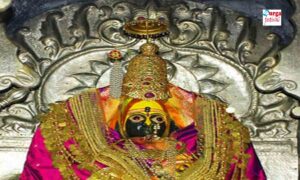
Goddess Bhavani of Tuljapur is famous for inspirational Goddess of Chhatrapati Shivaji Maharaj. He was blessed by goddess Bhavani, who honored him with ‘Bhawani sword’ that protected him from enemies and blessed for victory in most of his war front. Goddess Bhavani of Tuljapur is known as the Kulswamini of Maharashtra also.
According to one legend, several stories are associated with the temple and one most popular among them is Mahish Mardini and destruction of Demon Madhu-Kaitabha. The story of two demons, Madhu and Kaitabh, who was torturing on Devta and human both in the heaven and Earth.
They went to Lord Brahma for help and he advised them to prey to Goddess Shakti to rescue them from demons. Goddess Shakti in the form of a Mata Bhavani with the help of other Sapta Goddesses, killed demons and protect the universe and restore peace, among Sade 3 Shakti Peeths in Maharashtra.
According to Legend goddess Bhavani also killed Mahishasura in her form of Mahishasura Mardini Durga. The demon that had taken up the disguise of a buffalo or Mahish, and took shelter on Yamunachala Hill. The Tulja Bhavani Temple exists on the same location which is the part of Balaghat mountain range.
The idol of Tulja Mata is 3ft and is said to be swayambhu. A yagna kund placed in front of the temple and two water body, which is known as Gomukh Teerth and Kallol Teerth also found in the temple premises. Devotees used to dip in these holy ponds before worship Goddess. Many other idols of Gods also found in the temple premises.
Ganesh Chaturthi, Tulja Bhavani Festival, Diwali, and Holi are the main festivals celebrated in the temple. Tulja Bhavani Festival is also known as Durga Puja and Navratri.
4. Renuka Mata Temple Is Legendary Among Sade 3 Shakti Peeths
Renuka Mata Temple is one of most famous Shakti Peeths and significant Hindu Temple among Sade 3 Shakti Peeths In Maharashtra. Located in Mahur, which is 130 km from Nanded, the nearest airport. The temple placed top of the one of three peaks in the areas among other two temple on the top of other two peaks are Datta Shikhar Temple and Atri Anusuya Shikhar Temple.
A very touchy story is associated with this temple along many other stories. Renuka Devi was wife of sage Jamadagni and mother of 5 sons, one of them was Rishi Parashurama who was incarnation of Lord Vishnu. She was known as devoted wife and mother with charismatic personality. She was blessed to create a pot with sand daily for her husband’s prayer.
On a morning when she went out to bring water she unfortunately attracted a gandharva and lost her boon. Knowing it her husband became angry and ordered his sons to behead their mother. when they refuse to do, his curse burnt them alive. When he ordered parashurama to do this he agreed and cut his mother’s head with his axe.
Jamadagni was pleased and offer a boon for his reward. Parashurama demanded to alive his mother and brothers again. In the process of brought back to their life Renuka’s head exchanged with other lower caste woman who tried to save Renuka from his son and she was also beheaded by Parashurama.
Resulted Renuka’s head got a lower caste woman’s body and thus established the existence of ‘Yellamma Devi’. she stayed on that place to fulfil the prayer of devotees and Tulja Devi Formed among Sade 3 Shakti Peeths in Maharashtra.
According to another legend, King Sahastrarjuna when invited to Jamdagni’s house, he was pleased with their service as host. he wanted to know what is the reason to manage so successfully everything to satisfy him. Jamadagni explained how their powerful ‘Kamdhenu’, a cow gifted by God Indra manage all things to please their special guest.
When king knew about Kamdhenu, he was greedy, ask Jamadagni to give it to him, because the magical cow is more useful for a king not a sage. When Jamadagni deny to give it to the king, he killed Jamadagni and his wife Renuka. As a result Parashurama was broken down, he prayed to his mother on this hilltop where she
stayed as Renuka Mata to fulfil the wishes of her devotees as one of Sade 3 Shakti Peeths.
The place is known as “Matru teerth” mountain and people perform the last rituals of deceased on the lake is called ‘Antyeshti Sthan’ among Sade 3 Shakti Peeths in Maharashtra. Renuma mata Shakti Peeth is consider to be the most powerful and ‘Purna Shakti Peeth’ among Sade 3 Shakti Peeths in Maharashtra.
